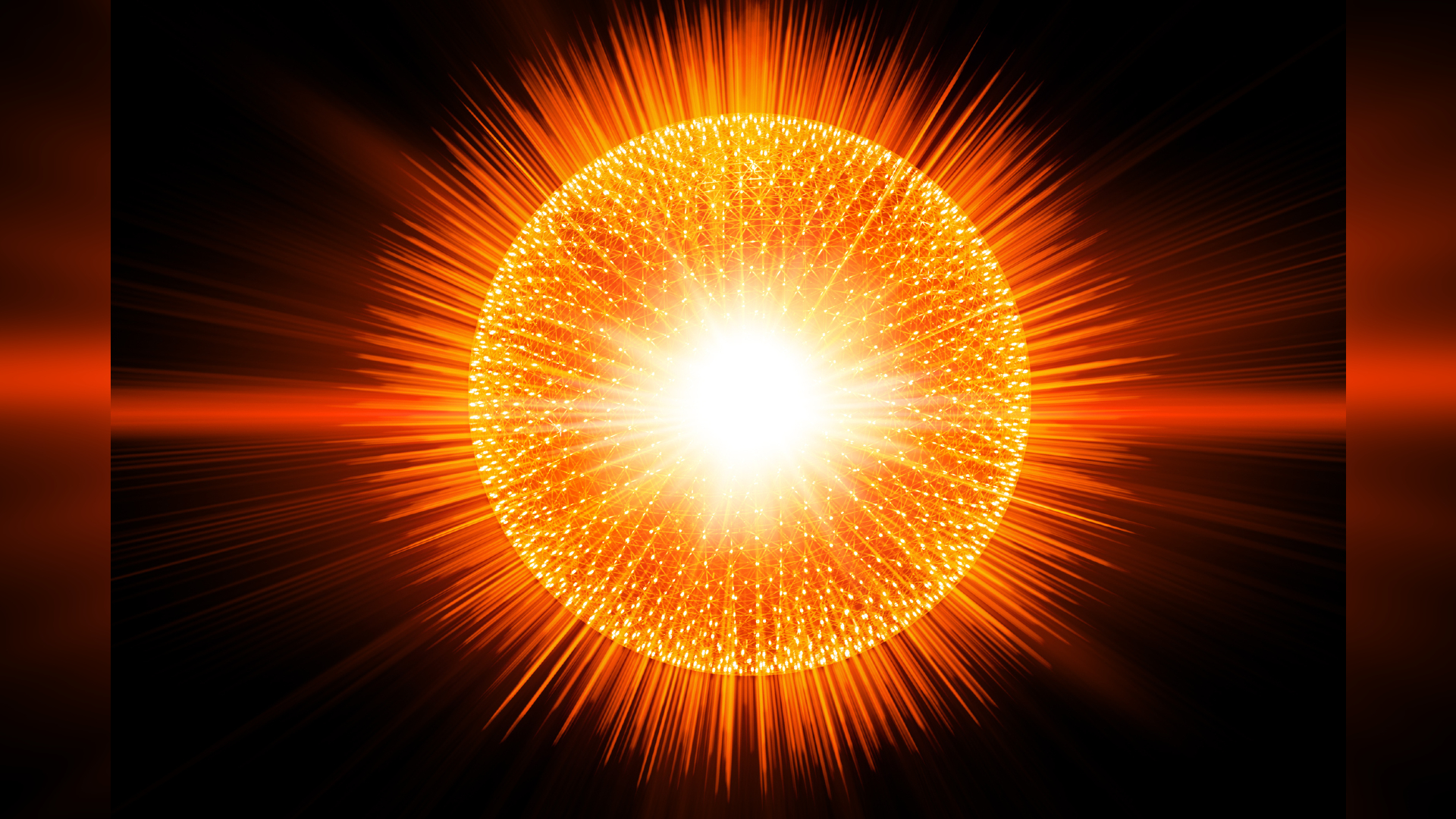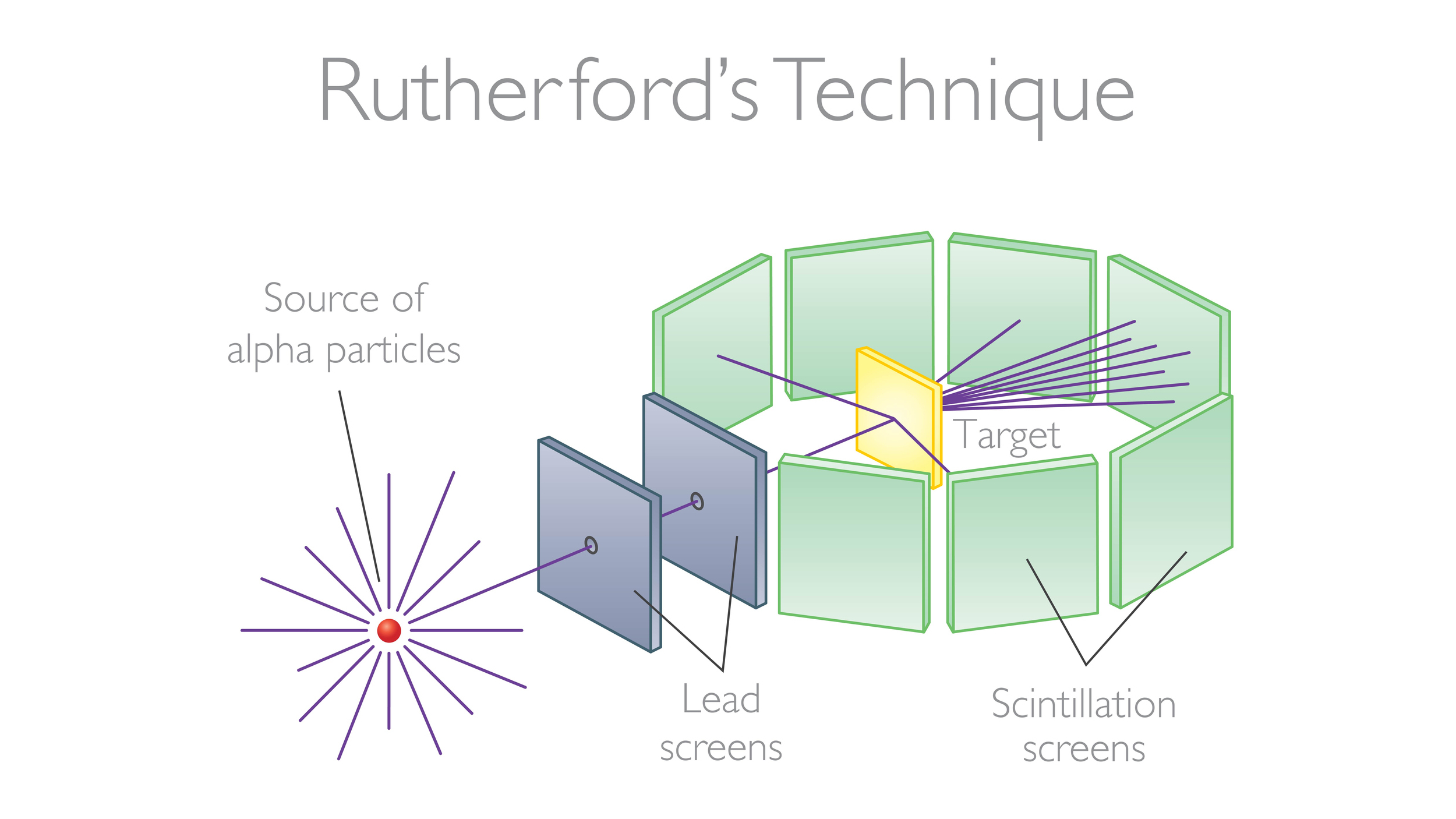Alpha particles and alpha radiation: Explained

Alongside beta particles, gamma rays, and neutrons, alpha particles are a type of radiation, also called alpha radiation. As with most forms of radiation, alpha particles are emitted from radioactive elements.
Alpha particles are relatively heavy and slow compared to their companions, so they pose little danger to humans unless ingested.
They are, however, frequently used in research — alpha particles were crucial in Ernest Rutherford's discovery of the atomic nucleus, which was the foundation of his atomic model.
What are alpha particles?
Alpha particles are positively charged particles that comprise two protons, two neutrons, and zero electrons. A single particle's mass is 4 amu (6.642×10−4 g), according to Britannica Alpha particles are emitted from heavy radioactive elements (both naturally occurring and man-made), including uranium, radium, and plutonium. Because of this, these elements are also called alpha emitters.
An alpha particle is commonly represented by the symbol α, the Greek letter alpha for which the particle is named. It was the first type of nuclear radiation to be discovered, before beta particles and gamma rays. But because an alpha particle is identical to the nucleus of a helium-4 atom, it is sometimes represented as He2+, that is, a doubly ionized helium-4 atom.
Rutherford's gold foil experiment explained
Between 1898 and 1899, physicist Ernest Rutherford, who was studying radioactivity at Cambridge University in England, determined that there were at least two types of radiation, which he named alpha and beta. The alpha particle would lead to his discovery of the atomic nucleus — and help him develop the Rutherford atomic model, a radical shift in humanity's understanding of atoms.
In 1911, Rutherford officially published a paper declaring the existence of a positively charged nucleus at the center of an atom (though he didn't formally call it a nucleus at this point). Since 1907, Rutherford, Hans Geiger, and Ernest Marsden had been performing a series of Coulomb scattering experiments at the University of Manchester in England. Those experiments involved shooting alpha particles at thin gold foil, then observing where those particles went after colliding with the foil.
Breaking space news, the latest updates on rocket launches, skywatching events and more!
At the time, J. J. Thompson's "plum pudding" atomic model was the dominant theory of atomic structure — it suggested atoms were perfect spheres of positively charged material in which negative electrons floated about with relatively even distribution.
If that model were true, alpha particles would have passed through the foil in Rutherford's Coulomb experiments. But Rutherford and his colleagues observed that a few of the alpha particles bounced off the foil in different directions. Rutherford then theorized that atoms had a dense nucleus surrounded by orbiting electrons — the alpha particles went through the space between the electrons and bounced off the nucleus.
What is alpha decay and how does it happen?
Alpha decay is the process by which alpha particles are formed, according to Britannica. Unstable radioactive elements called radionuclides emit particles from their nuclei to become more stable, transforming from the original element into a new one. Those emissions are radiation — in the case of alpha decay, alpha particles are emitted from the nuclei of heavy radioactive elements.
Alpha radiation charge and penetrating power
Alpha radiation has a positive charge of two. Of the main types of radiation, alpha particles are the heaviest and slowest, with a mass of 4 amu and ejection speeds of approximately 12,400 miles per second (20,000,000 km per second) according to the Australian Radiation Protection and Nuclear Safety Agency.
Despite being highly energetic, alpha particles expend most of that energy immediately after emission, so they do not travel farther than a few inches at most. They also have extremely low penetrating power — they cannot penetrate a human's epidermis, or outer layer of skin. Even a piece of paper is enough to block an alpha particle per the United States Nuclear Regulatory Committee.
Uses of alpha radiation
Commercially, alpha radiation is primarily used in smoke detectors (smoke reduces the alpha particles in the detector, triggering the alarm) and static eliminators (alpha ionizers).
There is also ongoing research into developing alpha-particle therapy to treat cancer — clinical trials have found some success in treating metastatic, castration-resistant prostate cancer. For research purposes, alpha particles are used as projectiles, as in the case of Rutherford's gold foil experiment.
Dangers of alpha radiation
Alpha radiation is not dangerous to humans externally due to its low penetrating power; alpha particles cannot penetrate your skin. They can, however, cause damage to your cornea.
The real danger occurs inside the body. If an alpha emitter (that is, a radioactive element) enters your body via ingestion, inhalation, a wound, or any other means, great damage could be done internally to living tissue.
Additional Resources
Read more about Rutherford's work with alpha particles in this online exhibition by the American Institute of Physics' Center for History. You can also learn more on his biography page from the Nobel Foundation — Rutherford was awarded the Nobel Prize in Chemistry in 1908 "for his investigations into the disintegration of the elements, and the chemistry of radioactive substances."
Bibliography
Australian Radiation Protection and Nuclear Safety Agency (ARPANSA), "Alpha particles."
Britannica, "Alpha decay."
Britannica, "Alpha particle."
United States Environmental Protection Agency (EPA), "Radiation Basics."
United States Nuclear Regulatory Commission (USNRC), "Radiation Basics."
Center for History, American Institute of Physics, "Rutherford's Nuclear World."

Space.com contributing writer Stefanie Waldek is a self-taught space nerd and aviation geek who is passionate about all things spaceflight and astronomy. With a background in travel and design journalism, as well as a Bachelor of Arts degree from New York University, she specializes in the budding space tourism industry and Earth-based astrotourism. In her free time, you can find her watching rocket launches or looking up at the stars, wondering what is out there. Learn more about her work at www.stefaniewaldek.com.

